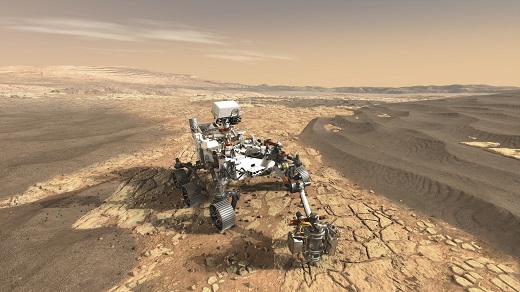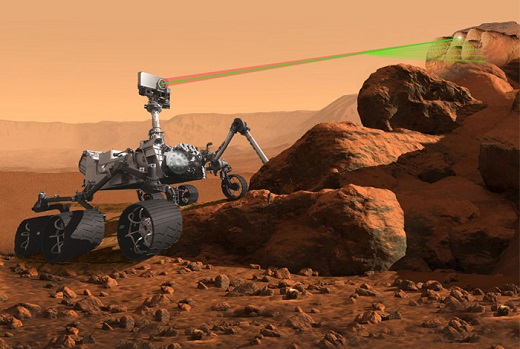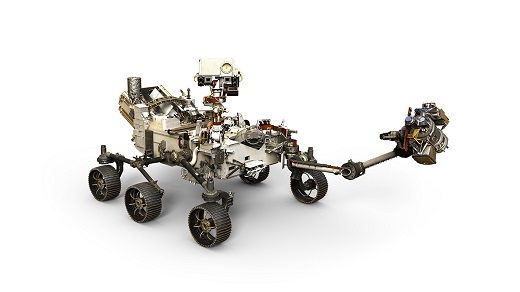Together with the Centre National d’Etudes Spatiales (CNES) and The Research Institute in Astrophysics and Planetology (IRAP), electrical engineering giant Thales Group is in the final stages of testing a new laser spectroscopy system for NASA’s upcoming Mars 2020 rover, set to launch in three years’ time.

The Mars 2020 rover will launch in three years' time and will use the new SuperCam system to analyse the martian environment. (Credit: Nasa)
A representative model of the system has already been built and tested in full, the results of which will be presented during the OSA Laser Congress, 1-5 October 2017 in Nagoya, Japan.
The new system, known as SuperCam, will serve as the next generation of the ChemCam spectroscopy system currently aboard the Curiosity rover, which has been on Mars since August 2012. ChemCam features the most powerful laser to operate on the surface of another planet, and uses it to perform laser induced breakdown spectroscopy (LIBS), a process where infrared pulses a few billionths of a second in duration are used to vaporise samples of matter at temperatures exceeding 8,000°C, the chemical signature of which is then captured in spectral images.
The SuperCam will be able to switch between using a new, faster LIBS system and a non-destructive Raman spectroscopy system that uses an entirely new conduction-cooled laser. While the LIBS system uses a 1,064nm wavelength, the Raman system features a KTP crystal that halves the same wavelength to 532nm, allowing it to detect the molecular structures of organic matter, revealing evidence of past life.

The SuperCam will examines rocks and soils with a camera, laser and spectrometers to seek organic compounds that could be related to past life on Mars. (Credit: Nasa)
The upgraded LIBS oscillator uses a diode pumped Nd:YAG crystal rather than ChemCam’s Nd:KGW crystal, enabling it to provide longer bursts.
‘With this laser we can do 1,000 shots in one burst, while the ChemCam laser was 10 time less,’ explained Eric Durand, one of SuperCam’s developers at Thales Group. ‘We longitudinally pump this laser with a stack which is broadband emitting so that when the temperature is changing, the ND:YAG crystal is still absorbing the light and the laser can be used over at least 50 to 60 degrees without temperature regulation.’
The designers of SuperCam found it particularly challenging to achieve the temperature stabilisation required to keep the system aligned and working for each spectroscopy mode, as this has to occur even while the rover traverses the rocky Martian terrain. Adding to this difficulty was the further need to meet the tight size and weight restrictions of space travel, while also keeping the system free of contaminants that would otherwise destroy its components – a feat achieved by sealing the instrument using laser-welding.

Artist's rendering of the Mars 2020 rover with its robotic arm extended. (Credit: Nasa)
The Mars 2020 mission is timed for a launch opportunity in July/August 2020, when Earth and Mars will be in optimal positions relative to each other for landing, as it will take less time to reach Mars at this time compared to other positions in the orbits of the two planets. Set to land in February 2021, the mission will provide opportunities to gather knowledge and demonstrate technologies that address the challenges of future human expeditions to Mars. These include testing a method for producing oxygen from the Martian atmosphere, identifying other resources (such as subsurface water), improving landing techniques, and characterising weather, dust, and other potential environmental conditions that could affect future astronauts living and working on Mars.
The robust and powerful abilities of the new SuperCam will therefore be an invaluable chemical probe for the Mars 2020 mission, and could send a whole host of new findings back to Earth.
Related News
Military lidar technology inspires atomospheric sensor for use on Mars

